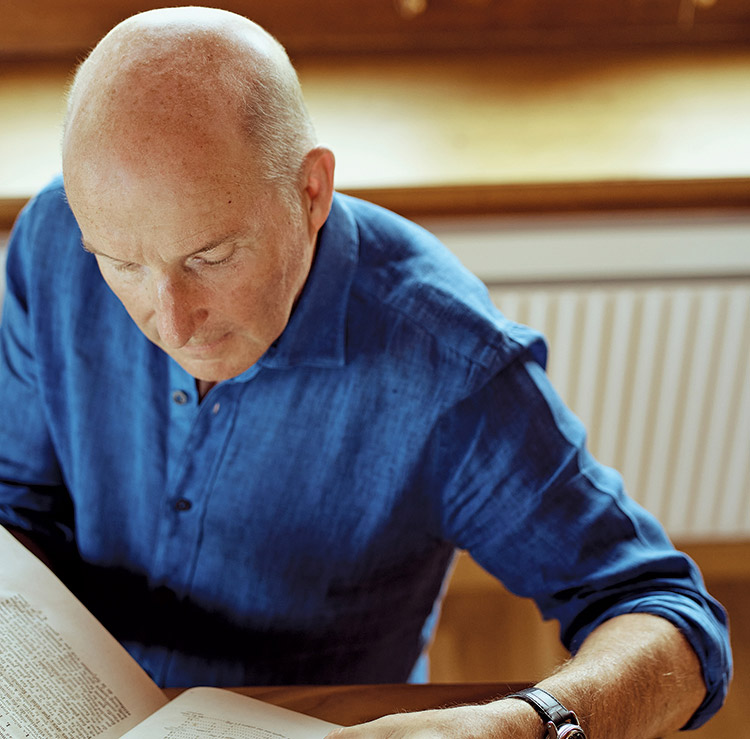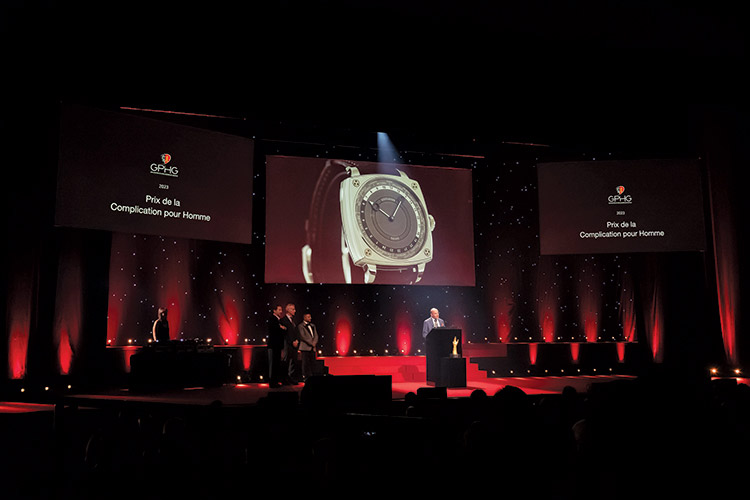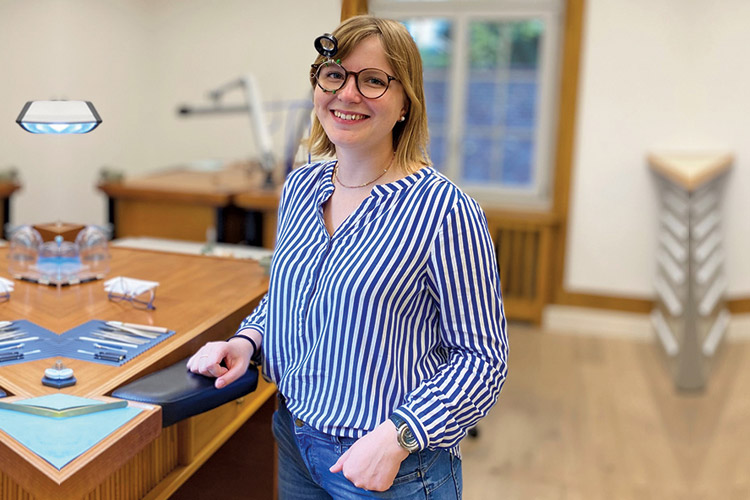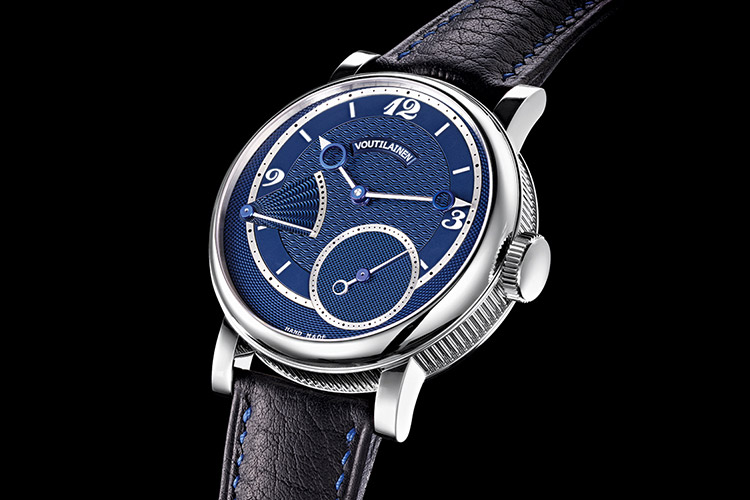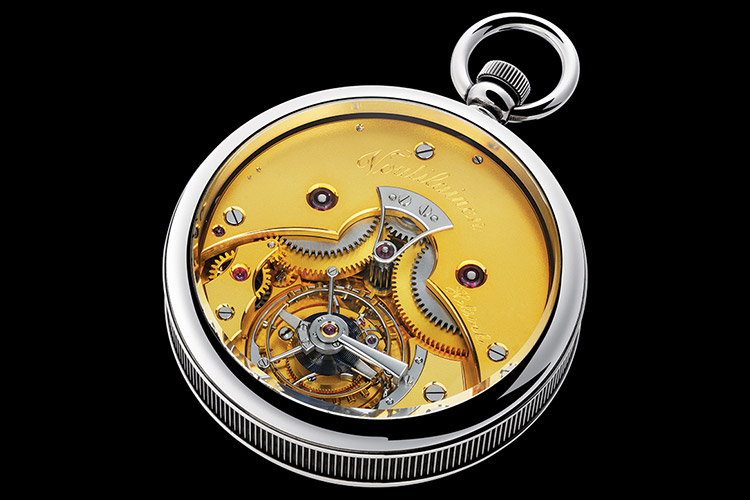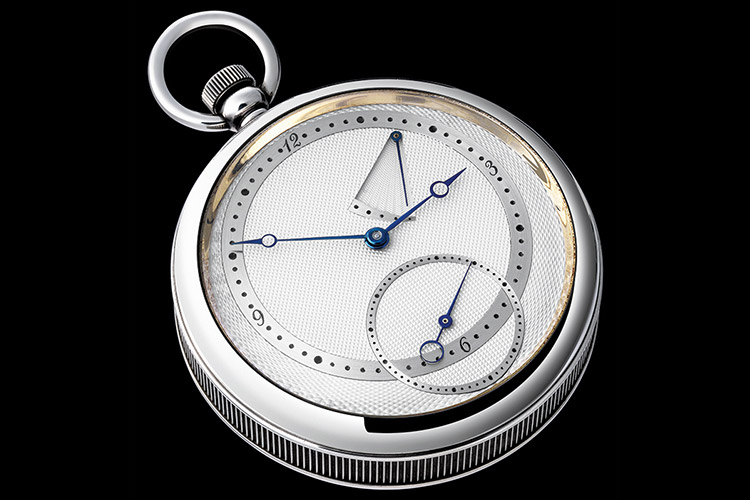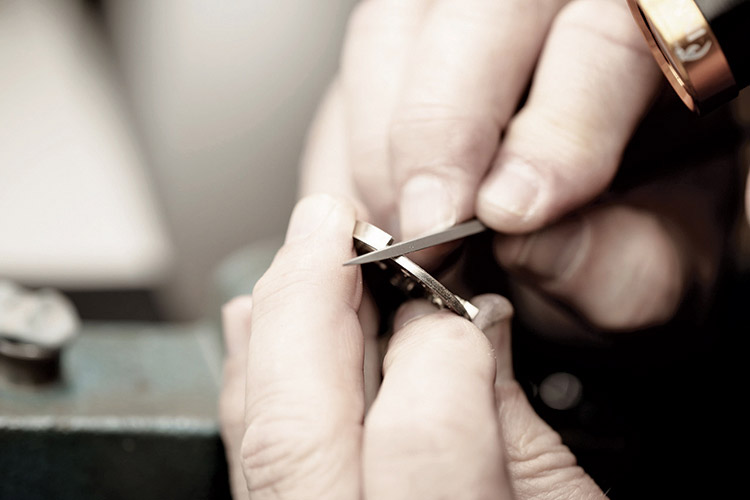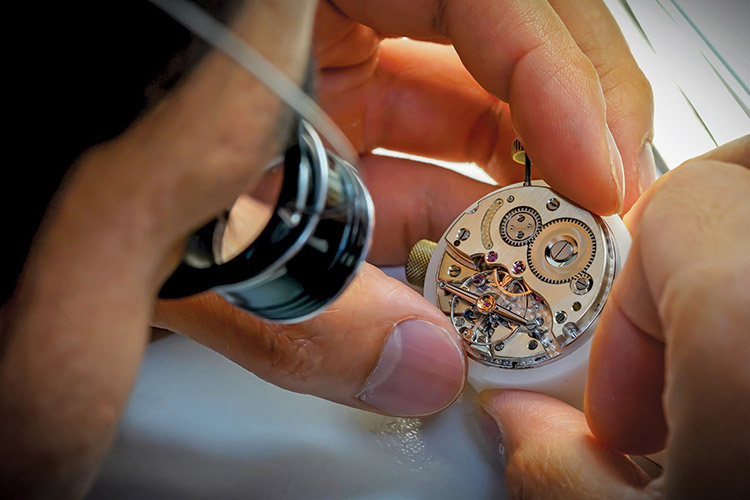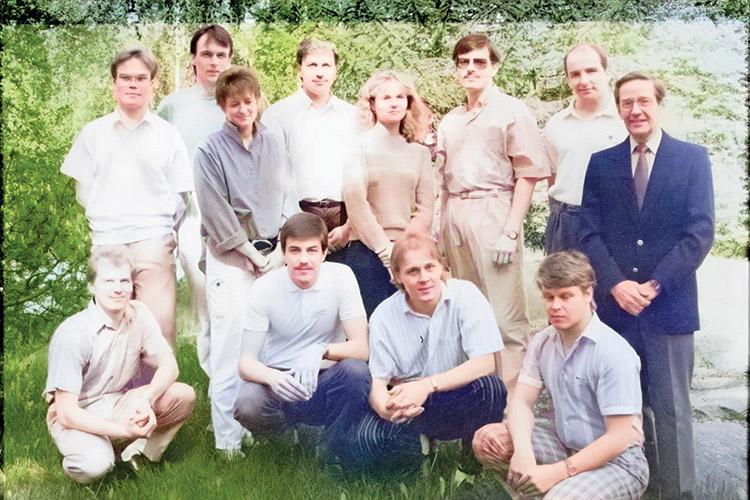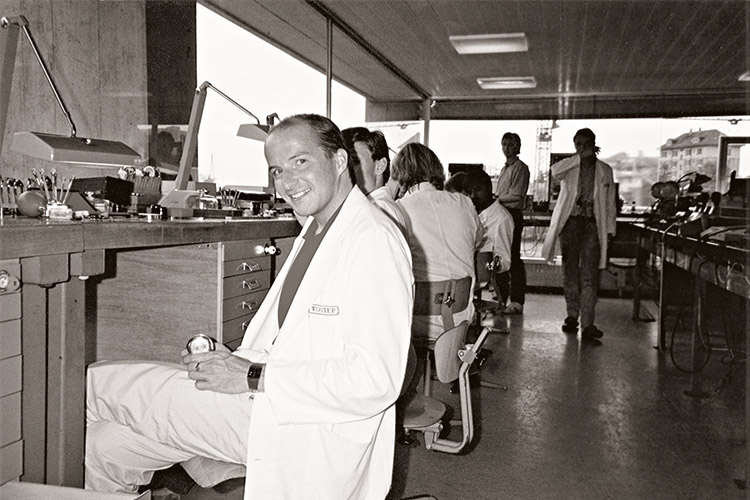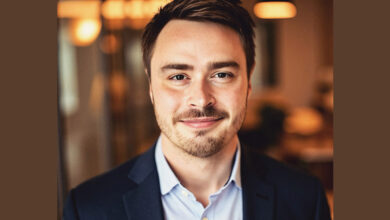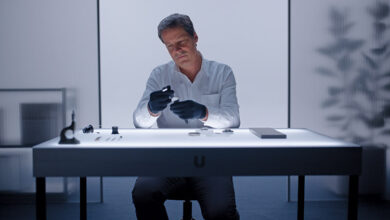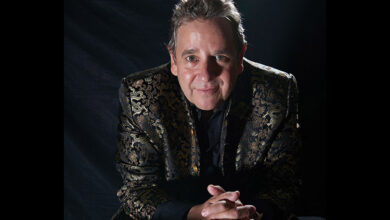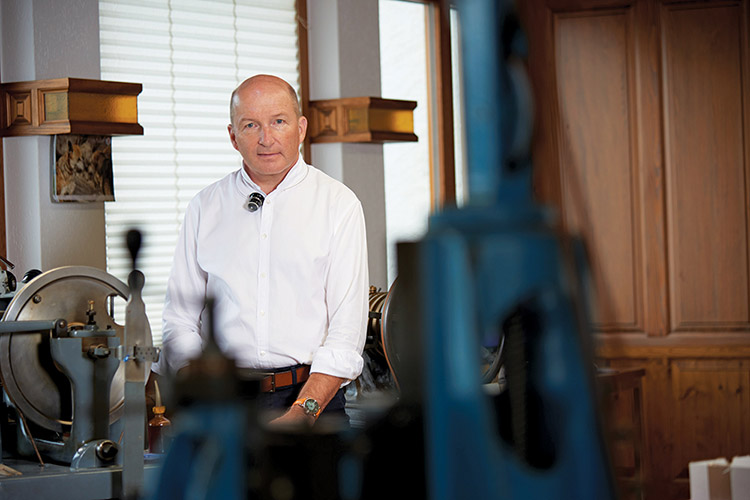
In 2023, the Voutilainen World Timer won the Grand Prix d’Horlogerie de Genève, or the GPHG, Men’s Complication Prize. It was not much of a surprise for anyone in the know as this is the master watchmaker’s 10th GPHG. In this on-going series on high horologists, this month, we turn our focus on Kari Voutilainen – the Finnish watchmaker, who is considered one of the greatest watchmakers in contemporary horology
FIRST CONTACT
For someone who is a byword in the world of haute horlogerie, Kari Voutilainen, surprisingly, does not have a family background in watchmaking. Kari was born in 1962 at Kemi, a small port and industrial town in Lapland. Watches had always been a fascination for young Kari; “I love to work with my hands and do all kind of artistic work such as drawing, woodwork, and so on. When I was a young boy, my father had a friend who was a watchmaker; he had a watch shop just across the road, and that was my first connection to watchmaking. I saw his benches, tools, and all these movements that were taken apart, and I found that fascinating.”
A few years passed and it was time for the young Kari to take a call on his future. “It was after my high school; I was obliged to start thinking on what I really wanted to do, on what I wanted to work in. It was watchmaking that always came to my mind because I wanted a profession that I could work with my hands. I’m not made for office work.” A friend told Kari about Kelloseppäkoulu – The Finnish School of Watchmaking at Espoo, Helsinki. Kari travelled there and found his idea of heaven. “It was first time in my life that I really went ‘Wow, this is for me’. Since then, my reluctance to work changed completely. I had a vision for my life, and it has been my passion since then.”
EXPANDING HORIZONS
Kari graduated from the Kelloseppäkoulu in 1986 and found his first job in the watch industry at a retail shop in Lapland. “It was all the way in the north and I thought that’s great, but I don’t want to do this for the rest of my life. I decided to learn more about watchmaking and came across this school in Switzerland called WOSTEP, the Watchmakers of Switzerland Training and Educational Program. I joined the school in 1988.”
But this was just the first step as it was mainly a refresher course for international students. “There were students from all over the world – 12 watchmakers in the class. I saw that there was another course on complications – an advanced one – and I applied for that.”
FIRST COMPANY
Kari had exactly one year in between these two courses. “So, I went back to Finland after that refresher course and set up my own company for the first time. That was in 1988, and I was working as an independent for that one year. I started my company because I wanted to earn as much as possible, as quickly as possible, so that I could have money to pay fees, buy tools and books, and pay for other expenses.”
For Kari, starting a company in Finland at that point in time was not a big deal. “In Finland, it’s easy to start a company, but then I had to find customers and I was very busy during that year. At the end of the year, I closed my company, and I went back to Switzerland to do that course on complicated watches in 1989.” This Kari says, was a period of learning; “I did learn a lot; I worked on lots of restorations and then I had a couple of possibilities for my future. After the course, I ended up working in Parmigiani Fleurier for nine years.”
PARMIGIANI FLEURIER
Recounting his work with the brand, Kari explains that it was “A small company when I started working with them; I was 17th employee and I worked on restorations a bit, but I also worked on unique pieces, complicated pieces. Initially, I was working in a small workshop with an older gentleman who was 70 years old. His name was Charles Meylan.” Kari considers Meylan as a mentor, who was influential in his life. “He told me, ‘You should make a watch’ and pushed me to do it. During my time in WOSTEP, I had already met a few collectors and so, at the end of the workday, in the evenings, I started to make my own watch. I finished my first watch in 1994. It was a pocket watch tourbillon with a power reserve indication. I fabricated the movements, its case, and the dial myself.”
This period, Kari reminiscences, was a busy time as it almost felt that he was leading a double life. “During the day, I was working for Parmigiani mostly restoring high complications and, in the evenings and nights, I was working for myself.” It was mostly in the initial years at Parmigiani that Kari worked on restorations. “At the beginning I worked on a couple of restorations and then in 1996, the brand Parmigiani Fleurier was established. Until then, there were different restorations or even the making of new watches for Breguet and so on. I also worked on Vacheron Constantin watches, but after the brand Parmigiani was started, all of my work for the brand itself and the company was growing pretty fast, but I did learn a lot.”
THE TEACHER
Kari strongly believes in the idea of passing on knowledge and skills and it was this that led him to leave Parmigiani in 1999 and go back to school – but as a teacher this time. “I was supposed to work only for half the day over there at the school and the remaining half-day was to be for myself. But, in the end, it turned out that instead of 50% of my workday there, I was spending 150% and I just didn’t have any more time for myself. My kids were very young at that time, and I was operating my workshop out of home. This went on for three years and I then decided to quit my job and begin my own company.”
THE FOUNDER AND CREATOR
“I rented a space in my village for my workshop and moved all my tools there and started working from there. Whatever money I had earned from my personal evening work during my time at Parmigiani, I always invested it back to the workshop, buying tools, benches, and so on. It was easy to establish my own company because I had all the requisite tools and set-up.” This was indeed a big move, because by that time, Kari had young children and a lot of financial responsibilities. But Kari was working so hard at his day job that he was very tired. He was also wise enough to realise, as so eloquently put by Virgil, that ‘Time flies never to be recalled’. This was further reinforced when his brother unexpectedly passed away, and it served as a wake-up call.
“I realised that if I did not now do what I wanted to do in my life, I may never get to do it.” His wife was working at that time in operating theatres in a hospital and they did have some stable income, but life was still a bit difficult for the first couple of years. “When I started, I had a couple of principles in my mind. One was that I will remain independent – financial independence meant no investors or partners, but working alone. The second was that I wanted to enjoy the liberty of the creation. I would do things by myself, for my satisfaction. I was thinking about how I could adhere to these two principle and so I started to work for other companies at the beginning. I did a lot of work for prototypes, assembling movements, decoration, and that sort of things for other companies which gave me the daily cash flow to run my business. I also didn’t have any pressure to sell my watches, so, I was essentially creating watches that satisfied me and without worrying if it would sell. With that balance, I enjoyed great freedom.”
“For almost 10 years, we were working for other companies and this helped take away the financial pressure to finish my watches and to sell them. In the beginning, I was working for Greubel Forsey – doing a lot of work on assembling their movements and so on.”
The turning point for Kari Voutilainen, the brand, was in 2006. Kari had made quite a few complicated watches by then on customer requests, but he did not have a base movement of his own. “Using a Peseux 260 ébauche movement, I presented the Observatoire timepiece in 2006, and this became a hit. They were retailers and private people who enquired about it and that was great. But when I went back home from the Basel Watch Fair, I started to think that I can’t do all of that. So, when I did actually receive orders from retail shops, I told them, ‘I’m sorry, I can’t do that’. I did accept private requests only and none that came from retail stores. Because of this, my production has been stable. We were doing 25 watches and, later, 50 watches for many years; now it is between 50 and 75 watches per year.
Collaborations
Though the brand Kari Voutilainen is extremely popular with watch lovers and there is no shortage of clients requesting his watches, Kari loves collaborating with other watchmakers and brands. Such collaborations are invariably highly successful. Kari attributes this to the fact that his collaborations are not dictated by financial gain. “Those collaborations are more because of the people; they are not based on money. I have to admit that the money doesn’t move me. I do not think about money, and I do not run after it. My decision to create and run my company without investors is exceedingly difficult, but I can also see the long-term picture and that’s why I have found different ways to make it work; one of them is collaborations with other watchmakers and brands. For instance, I collaborate with Maximilian Büsser, CEO of MB&F, because I like him as a person, and I respect a lot of his ideas. He is a guy with a vision, an entrepreneur, and a person who really drives his company. My first collaboration with Max – Legacy Machine 1 is my most favourite one.”
Expansion of Manufacture
Currently, Kari’s clients are in for a wait of 7 years or more before they can sport the watch they have ordered from him on their wrists. This, Kari admits, is a cause of stress for him. “That’s why we moved to new premises three years ago. We have a new workshop with an incredible view on the mountain, and about two years ago, I was lucky enough to purchase another building in the same area; it used to be a watchmaking school built 1896, and we’ve been renovating this building for more than 1.5 years. It’s a three-storey building with big rooms, with an additional room on the roof top. We are renovating the rooftop space as a social space with a cafeteria, and so on. Of the three floors, one floor will have engine-turning facilities, in another floor, we are planning to work on unit pieces and small series. I’m hiring some more watchmakers and that will also help to reduce our wait time.”
Since 2021, Kari has also been heading Urban Jürgensen – a watch manufacture that is more than 250 years old. Speaking on the acquisition, Kari explains, “I have a history with the brand because I have known the previous owners and, particularly Peter Baumberger, who bought the company in 80s, and Derek Pratt. I started to work with them in 1996 on restorations or while prototyping new pieces, or unique pieces and would meet him almost every week and am very close to him. That’s one reason why I accepted the position; another one is that I like the brand’s Scandinavian background, plus the style of their watches is so unique and it appeals to me. I wanted to be a part of that.”
Kari admits that finding the time to manage both brands is a lot of work but is happy and considers himself lucky in that his daughter is also a watchmaker. In fact, for the past three years, she has actually been running the company while Kari has concentrated more on the creation aspect – numbers, new products, and so on. He meets up with his daughter once or twice per week to oversee.
GPHG AND OTHER RECOGNITIONS
The brand Kari Voutilainen has till date been awarded a total of 10 GPHG awards over the years, and he is considered by many to be the “Master of Dials” as well as the “Greatest Watchmaker”. A GPHG award, Kari says, still feels incredibly special; “I’m highly thrilled about that, mainly because it means that our work is recognised. I’ve been trying to do my work not only with a passion but also ethically. Money is not my end goal, rather I like to make sure that things are properly done.”
